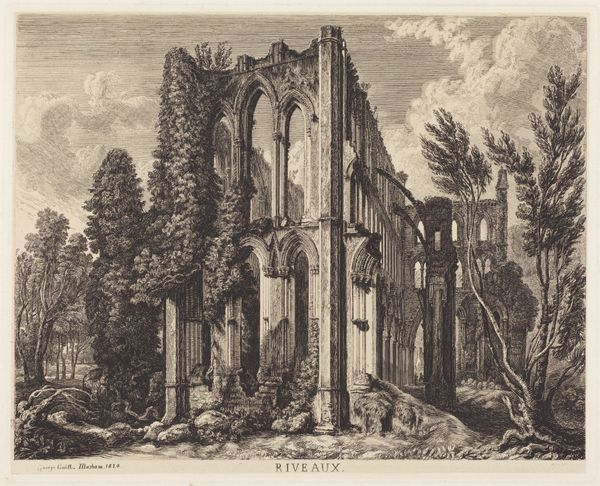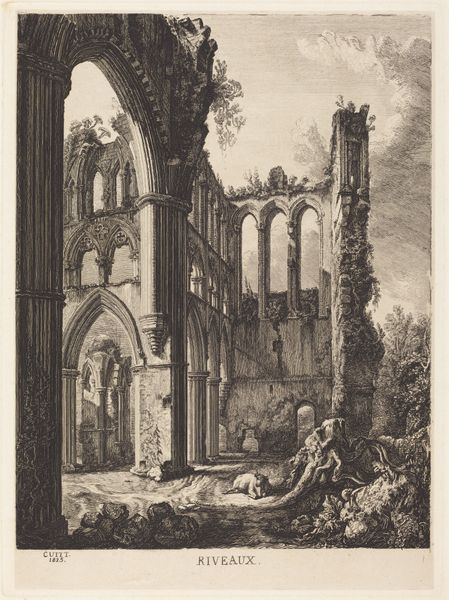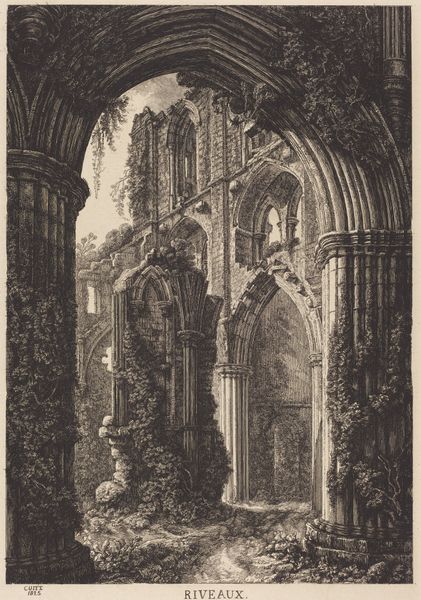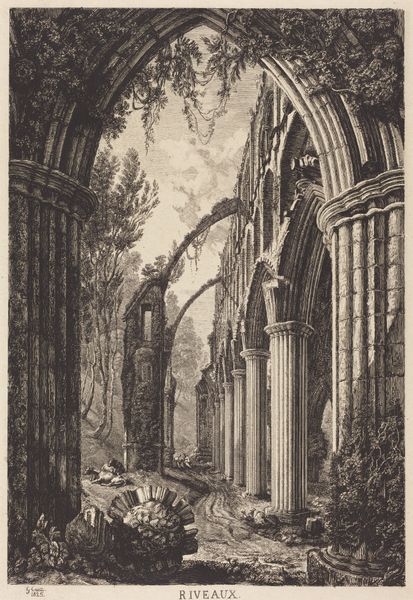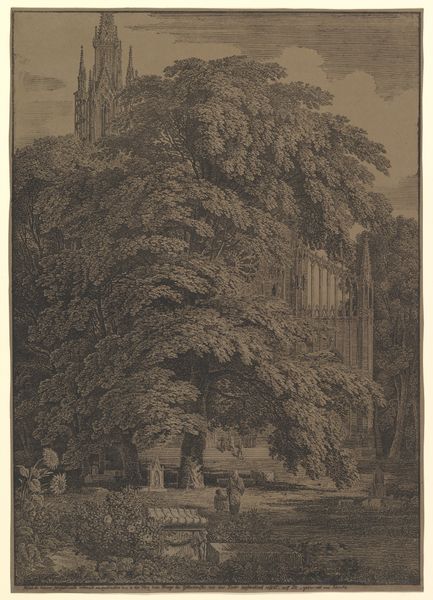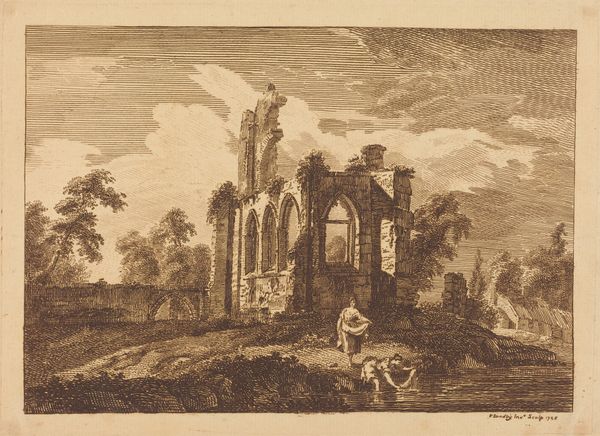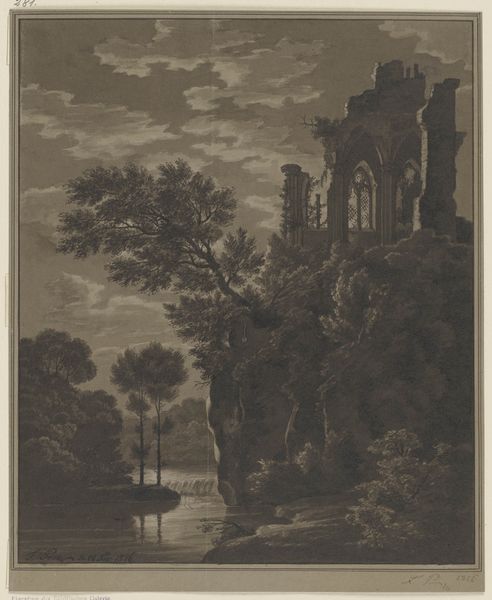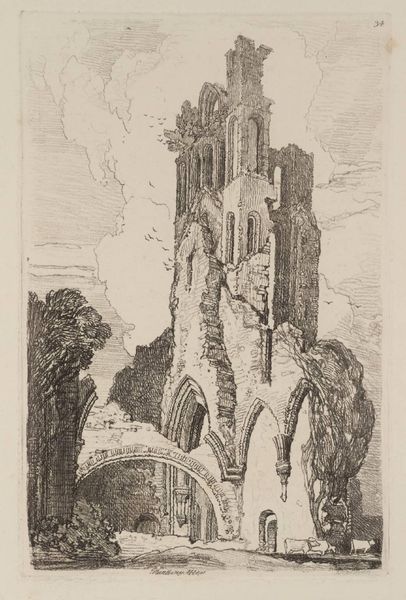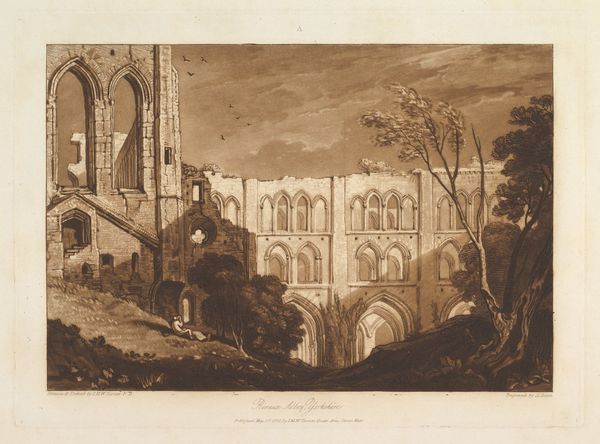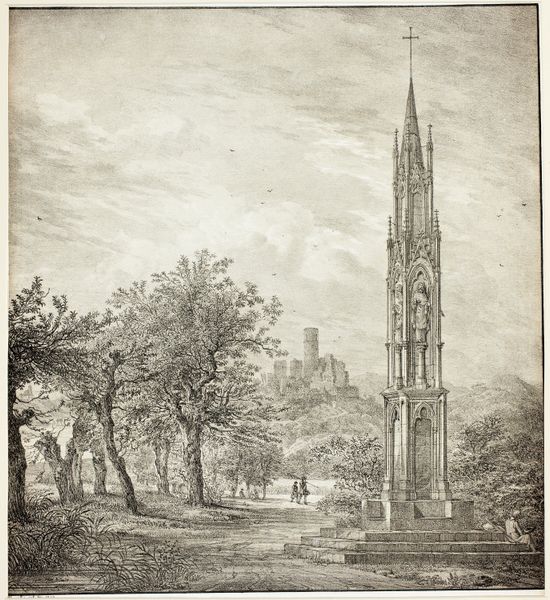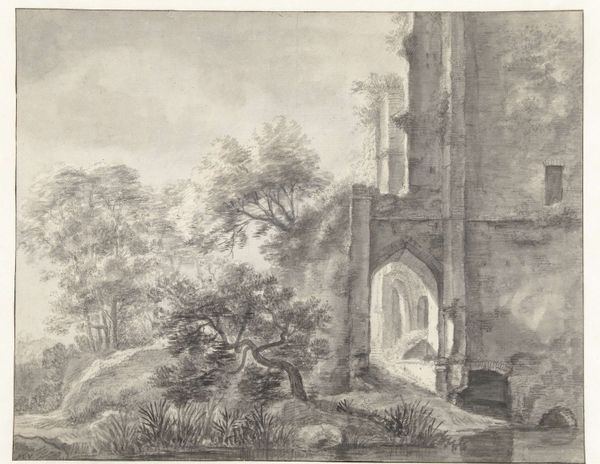
print, etching, engraving, architecture
#
pencil drawn
# print
#
etching
#
landscape
#
romanticism
#
engraving
#
architecture
Dimensions: plate: 30 x 27 cm (11 13/16 x 10 5/8 in.) sheet: 41.9 x 32.6 cm (16 1/2 x 12 13/16 in.) mat: 55.9 x 40.6 cm (22 x 16 in.)
Copyright: National Gallery of Art: CC0 1.0
This print of Fountains Abbey was made by George Cuitt the Younger, who lived in the late 1700s and early 1800s. He used a technique called etching, a printmaking process which relies on the corrosive properties of acid to create an image in metal. The copperplate etching process involves applying a waxy, acid-resistant coating to a metal plate. The artist then scratches an image into this coating with a needle, exposing the metal underneath. When the plate is submerged in acid, the exposed lines are eaten away, creating grooves. Ink is then applied to the plate, filling these grooves. The surface is wiped clean, and the print is made by pressing paper against the plate. The final print presents a study in contrasts. The architecture has an imposing, monumental quality but it is also in ruins, suggesting a sense of loss and decay. It is a reminder that time has a transformative power. The labor-intensive process of etching mirrors the way time has slowly eroded these buildings. It prompts us to consider the relationship between human effort, nature, and the passing of time.
Comments
No comments
Be the first to comment and join the conversation on the ultimate creative platform.
